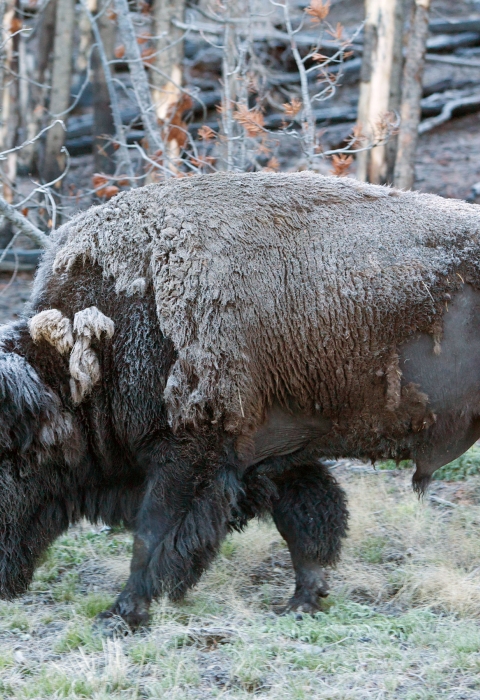The U.S. Fish and Wildlife Service has completed initial reviews of Endangered Species Act (ESA) petitions for three species: the Mojave poppy bee, the Mount Graham red squirrel, and the Yellowstone bison. The Service concluded that there is substantial information available to consider listing the Mojave poppy bee as endangered and will begin an in-depth review of this species to determine if the Mojave poppy bee should be listed under the ESA. The petition requesting critical habitat designation for the endangered Mount Graham red squirrel also presents substantial information indicating that revising critical habitat for this species may be warranted. The petition for the Yellowstone bison did not present substantial information to indicate listing may be warranted, so no additional action will be taken.
The Mojave poppy bee is a tiny quarter-inch long, yellow-and-black specialist bee that has pollinating skills tightly linked to the survival of two rare desert poppy flowers in the Mojave Desert. The bee is currently found in only seven known sites in Nevada. The Service finds the petition to list the Mojave poppy bee presented substantial information on potential threats associated with grazing, recreation, gypsum mining and competition with nonnative honeybees.
The Mount Graham red squirrel is a small, grayish-brown arboreal subspecies weighing a mere 8 ounces and measuring about 8 inches in length, with a 6-inch long fluffy tail. Its historical and current range is limited to the Pinaleño Mountains in Graham County, Arizona, where it currently occurs in high-elevations down to approximately 7,500 feet. The squirrel was originally listed as endangered in 1987 due to a reduction in range and habitat from forest fires, road construction and other development. The Service has found substantial information indicating that revising critical habitat for this species may be warranted.
The Yellowstone National Park bison is the oldest and largest wild population of Plains bison. It is the only herd in the United States descending, in part, from a continuously wild herd. It is free-ranging and subject to natural selection factors such as predation and competition, while representing a large source of unique genetic variation, with no evidence of introgression from domestic cattle. The Service finds that the petitions to list the Yellowstone bison as an endangered or threatened distinct population segment do not present substantial scientific or commercial information that listing may be warranted.
The ESA allows citizens to petition the Service to add species to the List of Endangered and Threatened Wildlife and Plants, remove species from the list, and to reclassify species already on the list.
The Federal Register docket numbers and links for the substantial petition findings in this batch are:
Species | Range | Docket Number | Docket link |
Mojave poppy bee | NV | FWS-R8-ES-2019-0083 | |
Mount Graham red squirrel | AZ | FWS-R2-ES-2019-0084 |
The Federal Register docket numbers and links for the not-substantial petition findings in this batch are:
Species | Range | Docket Number | Docket link |
Yellowstone bison | WY, MO, ID | FWS–R6-ES-2019-0085 |
The notice for the above findings will be available in the Federal Register Reading Room on September 6, 2019 at https://www.federalregister.gov/public-inspection on the 2019 Notices link under Endangered and Threatened Wildlife and Plants.
For more information on the ESA listing process, including 90-day findings and status reviews, please go to www.fws.gov/endangered/esa-library/pdf/listing.pdf.



